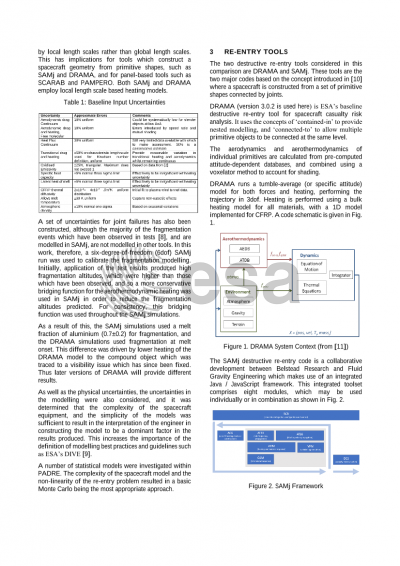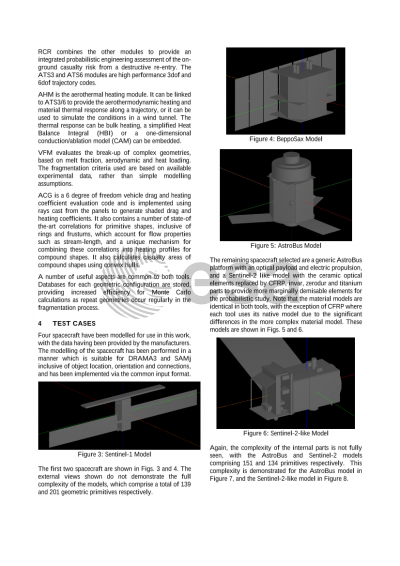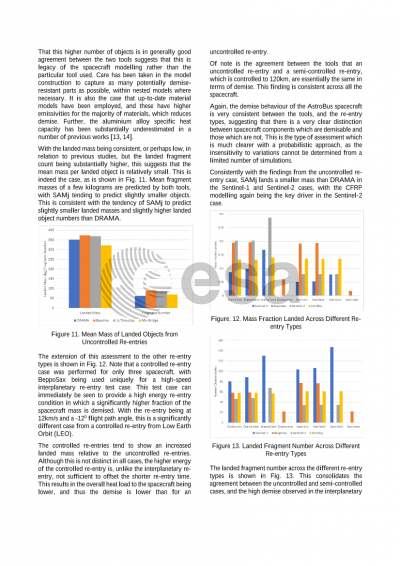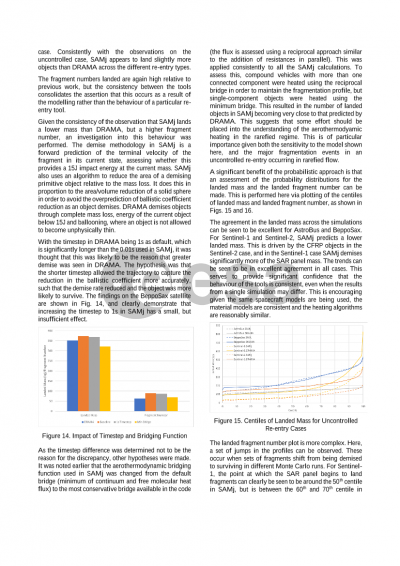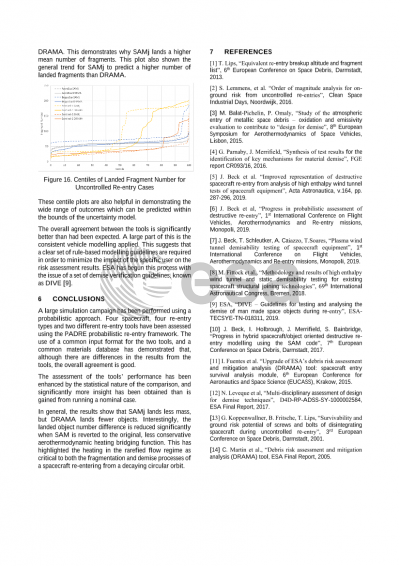Document details

Abstract
Recently, ESA have developed a framework in which a probabilistic assessment of destructive re-entry can be performed. This framework, known as PADRE, considers uncertainties to atmospheric density, aerothermodynamic heating and aerodynamic drag, material properties, fragmentation modelling and initial conditions within a Monte Carlo assessment. Sensitivities to the aerothermodynamic heating and fragmentation were found to be dominant, with significant contributions from uncertainties in melt temperature for alloys with low melt temperatures and in emissivity for alloys with high melt temperature.
The PADRE software has been developed to be tool agnostic, and adapters have been constructed for a number of destructive re-entry tools. The tool comparison in this paper is performed between ESA’s DRAMA tool, which is the baseline tool for risk assessments for ESA spacecraft, and the SAM destructive re-entry research tool, which has some useful verification from ground test rebuilding. Both of these tools employ a component-based spacecraft model, where the spacecraft is constructed of a set of primitive components linked by joints.
As well as the physical uncertainties, the uncertainties in the modelling were also considered, and it was determined that the complexity of the spacecraft equipment, and the simplicity of the models was sufficient to result in the interpretation of the engineer in constructing the model to be a dominant factor in the results produced. Assessment of this has been performed by using an identical set of models within the two destructive re-entry tools.
The results from the two tools, in terms of the landed fragment mass and landed fragment number, have been shown to be in good agreement when assessed statistically, which can be seen much more clearly than in the comparison of the results from a nominal case. From this, it has been suggested that a clear set of rule-based modelling guidelines are required in order to minimize the impact of the specific user on the risk assessment results.
The fragmentation modelling employed within the tools has been based on the findings from testing, which have been rebuilt by SAM. These models produced high fragmentation altitudes, which were higher than those which have been observed, and so a more conservative bridging function for the aerothermodynamic heating was used in SAM in order to reduce the fragmentation altitudes predicted. For consistency, this bridging function was used throughout the SAM simulations.
In general, SAM lands less mass, but DRAMA lands fewer objects. Interestingly, the landed object number difference is reduced significantly when SAM is reverted to the original, less conservative aerothermodynamic heating bridging function. This has highlighted the heating in the rarefied flow regime as critical to both the fragmentation and demise processes of a spacecraft re-entering from a decaying circular orbit.
Preview

